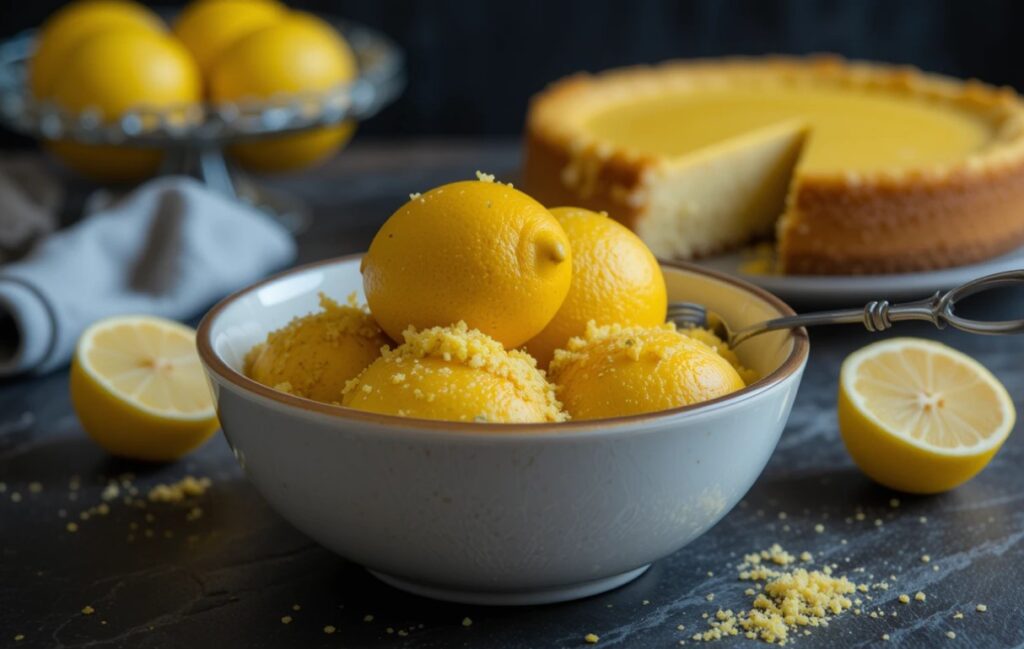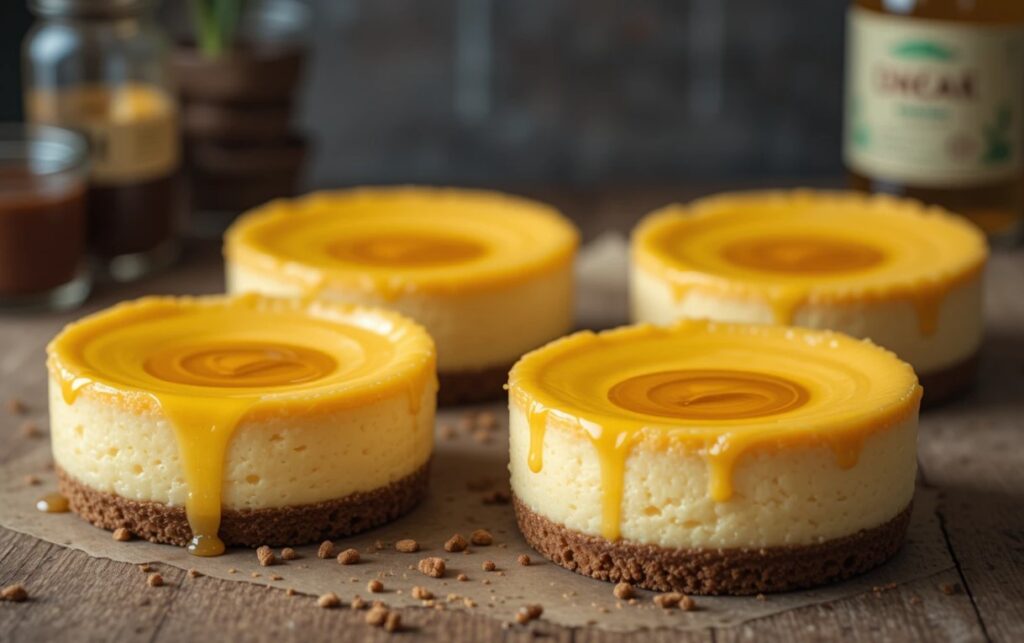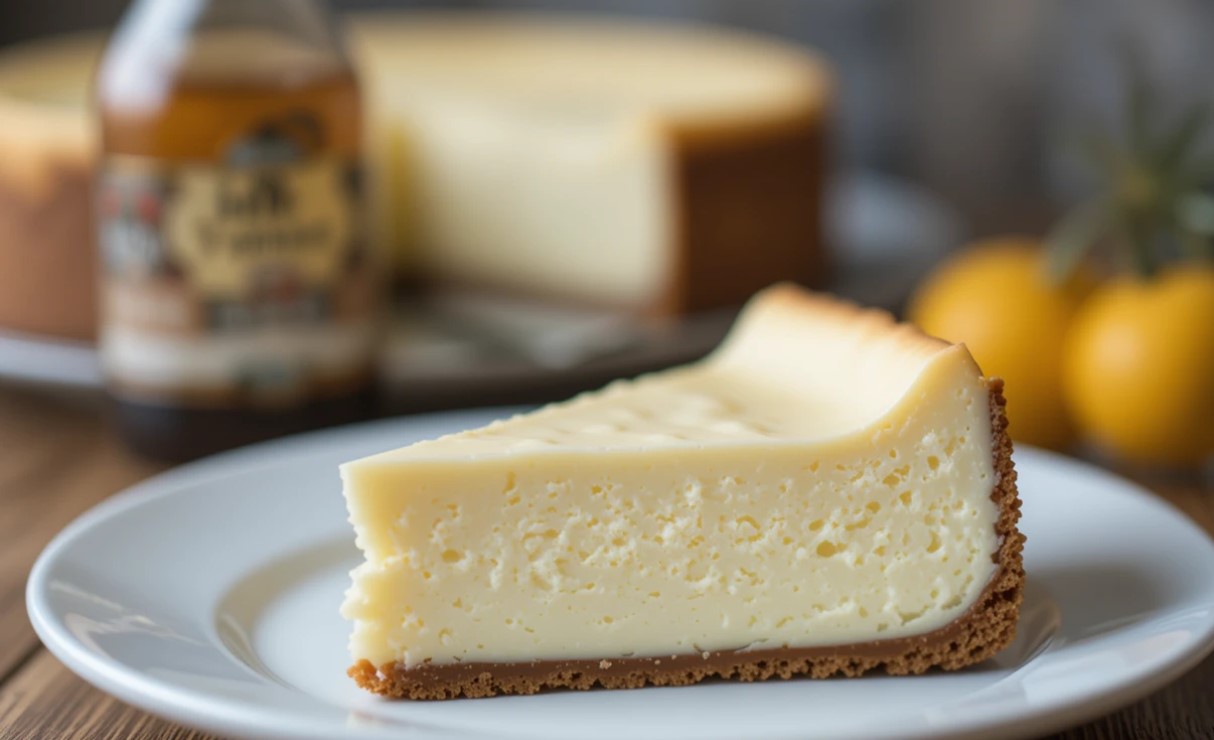Why Vinegar in Cheesecake is a Mystery Worth Solving
Cheesecake is a dessert beloved for its creamy texture and indulgent flavor, but achieving perfection can be a tricky art. Many recipes feature an unexpected ingredient: vinegar. While it may sound unusual to include something acidic in such a rich dessert, vinegar plays an essential role in crafting the ideal cheesecake. But why do you put vinegar in cheesecake? The answer lies in its ability to enhance texture, balance flavors, and support the science of baking.
The Role of Acidity in Cheesecake
1 Understanding Acidity in Baking
Acidity is a fundamental element in baking, often used to achieve the perfect balance of flavors and textures. In cheesecake, the role of acidity goes beyond taste—it’s about chemistry. Acidic ingredients, like vinegar, interact with other components to influence the dessert’s structure and mouthfeel.
For instance, the pH level in cheesecake batter affects its final texture. An acidic element ensures the batter is smooth, with a consistency that’s neither too firm nor overly soft. By incorporating vinegar, bakers can achieve the ideal combination of creamy and airy.
2 How Vinegar Adds Balance to Sweetness
Cheesecake is undeniably sweet, but too much sugar can overpower its delicate flavor. Vinegar introduces a subtle tanginess that counteracts excessive sweetness, creating a harmonious taste. This balance allows the natural flavors of cream cheese, eggs, and vanilla to shine.
Moreover, this touch of acidity enhances the dessert’s versatility, making it an excellent pairing with various toppings, from fresh fruits to chocolate drizzles.
The Science Behind Vinegar in Cheesecake
1 Chemical Reaction with Baking Soda
The inclusion of vinegar in cheesecake isn’t just about taste—it’s also a matter of chemistry. In many baking recipes, vinegar interacts with baking soda or baking powder to produce carbon dioxide. This reaction creates air bubbles, which help lighten the batter. While cheesecake doesn’t rely heavily on rising like a cake, this chemical process ensures the texture remains smooth and creamy rather than dense.
Additionally, this reaction contributes to a uniform structure, reducing the risk of cracks that often plague cheesecakes. It’s a subtle yet significant step toward achieving that bakery-perfect dessert.
2 Enhancing Cheesecake’s Texture
Vinegar has a unique ability to break down proteins in dairy, which is a crucial factor when working with cream cheese. By slightly curdling the milk proteins, vinegar creates a softer, silkier texture in the final product. This process helps bind the ingredients together seamlessly, leading to a cheesecake that’s rich and velvety.
Without this step, cheesecakes can risk being too heavy or clumpy, especially when the batter is overmixed. Vinegar serves as a natural stabilizer, ensuring that each slice is as luscious as the last.
Types of Vinegar Used in Cheesecake
1 White Vinegar: A Popular Choice
White vinegar is the most commonly used type of vinegar in cheesecake recipes, and for good reason. It has a neutral flavor that doesn’t compete with the dessert’s natural sweetness or the tanginess of cream cheese. Its primary function is to enhance texture and balance flavors without introducing any noticeable taste of its own.
This vinegar is widely available, affordable, and easy to measure. If you’re new to using vinegar in baking, white vinegar is a foolproof choice to start with.
2 Apple Cider Vinegar: For a Subtle Tang
For those looking to add a unique twist to their cheesecake, apple cider vinegar is an excellent alternative. While it’s slightly less neutral than white vinegar, its subtle fruity undertones can complement certain recipes, particularly those that feature fruit-based toppings or fillings.
Apple cider vinegar works well in rustic or creative cheesecake variations, where its distinctive character enhances the dessert rather than blending seamlessly. It’s especially popular in recipes that emphasize natural or organic ingredients.
3 Other Types of Vinegar
While less common, other types of vinegar, such as rice vinegar or wine vinegar, can occasionally be used in experimental recipes. However, their specific flavor profiles may not suit all cheesecakes. It’s essential to use these sparingly and with caution to avoid overpowering the dessert.
Substitutes for Vinegar in Cheesecake

1 Lemon Juice: A Citrus Alternative
Lemon juice is the most popular substitute for vinegar in cheesecake recipes. Its natural acidity mimics vinegar’s chemical properties, making it a seamless alternative. Lemon juice not only helps achieve the desired texture but also adds a refreshing citrus flavor that complements the richness of cream cheese.
This substitute works particularly well in cheesecakes with fruit toppings, as the lemon enhances the brightness of flavors. However, it’s essential to use fresh lemon juice for the best results, as bottled versions may contain preservatives that alter the taste.
Pro Tip: Use an equal amount of lemon juice in place of vinegar to maintain the recipe’s balance.
2 Yogurt: Adding a Creamy Tang
Yogurt is another excellent option for replacing vinegar, especially in cheesecakes. Its tanginess and creamy texture make it a dual-purpose ingredient, providing both acidity and a luscious consistency. Greek yogurt, in particular, is ideal due to its thicker profile and higher protein content.
When substituting yogurt, it’s best to dilute it slightly with water or milk to match the consistency of vinegar.
3 Buttermilk: A Classic Baking Solution
Buttermilk is a tried-and-true substitute for vinegar in many baking recipes, including cheesecake. Its tangy flavor and acidity make it a perfect alternative. Since buttermilk is liquid, you can use it without any adjustments to the recipe’s wet-to-dry ingredient ratio.
Buttermilk is particularly well-suited for traditional or Southern-style cheesecakes, where its creamy, rich flavor enhances the dessert’s indulgence.
4 Cream of Tartar: The Pantry Standby
If you’re out of liquid acids like vinegar or lemon juice, cream of tartar is a dry alternative that can save the day. Known for its use in stabilizing whipped egg whites, cream of tartar provides the necessary acidity to improve texture and balance flavors.
To substitute, use a small amount—about half the quantity of vinegar—and mix it with a liquid component in the recipe.
Tips for Using Vinegar in Cheesecake Recipes
1 Measuring Vinegar for Precision
When adding vinegar to cheesecake, precision is key. Even small deviations can impact the dessert’s texture and flavor. Typically, cheesecake recipes call for a small amount of vinegar—often no more than a teaspoon or two. This minimal quantity ensures the acidity contributes to the texture without overpowering the flavor.
Pro Tip: Always use a measuring spoon for accuracy. Eyeballing can lead to inconsistent results, which may alter the balance of your cheesecake.
For those experimenting with substitutions, remember to adjust measurements accordingly. For example, if using lemon juice, use an equal amount, while for cream of tartar, reduce the quantity by half.
2 Balancing Flavors in Cheesecake
While vinegar helps create a smooth texture, it’s essential to balance its acidity with the richness of cream cheese and the sweetness of sugar. Overdoing the vinegar can result in an overly tangy flavor, which might not appeal to everyone. Instead, focus on harmony between all ingredients.
To enhance flavor balance:
- Add vanilla extract or a splash of almond extract for depth.
- Use complementary toppings like fresh fruit, chocolate drizzle, or caramel to mask any tanginess if it’s slightly noticeable.
- Avoid overmixing the batter, as it can introduce air bubbles and disrupt the texture.
3 Incorporating Vinegar at the Right Stage
The timing of adding vinegar to the batter can influence the outcome. For best results:
- Mix vinegar with the wet ingredients, like cream cheese and eggs, before incorporating the dry ingredients.
- Combine vinegar with any leavening agents, such as baking soda, to activate the chemical reaction immediately before baking.
Following this sequence helps the vinegar integrate evenly into the batter, ensuring a uniform texture.
4 Testing with Small Batches
If you’re new to using vinegar in cheesecake, consider starting with a small batch to gauge the flavor and texture. This approach allows you to refine the quantity of vinegar or test substitutes without wasting ingredients.
Common Misconceptions About Vinegar in Cheesecake

1 Will Vinegar Make Cheesecake Sour?
One common concern among bakers is whether vinegar will make their cheesecake taste sour. Fortunately, the answer is no—when used in the proper quantity, vinegar’s flavor becomes virtually undetectable. Instead, it subtly enhances the dessert’s overall balance by neutralizing excessive sweetness and improving texture.
The key is moderation. Cheesecake recipes typically call for only a small amount of vinegar, ensuring it enhances the dish without overpowering its creamy, sweet profile.
Pro Tip: If you’re sensitive to tangy flavors, stick with neutral vinegars like white vinegar to ensure a milder outcome.
2 Is Vinegar Necessary in All Cheesecake Recipes?
Another misconception is that vinegar is a mandatory ingredient in every cheesecake recipe. While it plays a valuable role in some variations, particularly those requiring a light texture or specific acidity, many cheesecakes achieve excellent results without it. For example:
- No-bake cheesecakes often skip vinegar since they rely on chilling rather than baking.
- Dense New York-style cheesecakes may prioritize creaminess over lightness, making vinegar less critical.
Vinegar is most beneficial in recipes where chemical reactions with leavening agents, such as baking soda, are required.
3 Vinegar vs. Other Acids: What’s the Difference?
Some bakers believe vinegar is interchangeable with any acidic ingredient. While this is true to an extent, different acids can produce varying results. For instance:
- Lemon juice adds a distinct citrus flavor that may not be suitable for all recipes.
- Apple cider vinegar provides a fruity undertone that could alter the cheesecake’s taste profile.
- Cream of tartar is purely acidic but lacks the liquid component needed for certain reactions.
Each acid has unique properties that influence the flavor, texture, and appearance of the cheesecake. Choosing the right one depends on the recipe and desired outcome.
4 Does Vinegar Affect Baking Time?
Some bakers worry that adding vinegar could alter the baking time or temperature of cheesecake. The truth is, vinegar has little impact on these factors. The primary variables affecting baking time are the oven temperature, batter consistency, and pan size.
However, the chemical reaction vinegar initiates can influence how evenly the cheesecake cooks, often leading to a smoother surface and fewer cracks. Just be sure to follow the recipe’s guidelines for baking and cooling.
FAQs About Vinegar in Cheesecake
1. Why do you put vinegar in cheesecake?
Vinegar is added to cheesecake to enhance its texture, balance its sweetness, and support chemical reactions during baking. It helps create a smooth, creamy consistency while preventing the dessert from becoming overly dense.
2. Can I taste the vinegar in cheesecake?
No, you won’t taste the vinegar when used in the correct amount. Its flavor becomes undetectable as it blends with the other ingredients, leaving only its functional benefits behind.
3. What can I use instead of vinegar in cheesecake?
Common substitutes for vinegar in cheesecake include lemon juice, yogurt, buttermilk, and cream of tartar. These alternatives provide the necessary acidity while offering slight variations in flavor and texture.
4. Is vinegar essential for no-bake cheesecakes?
No, vinegar is not typically used in no-bake cheesecakes. These recipes rely on chilling to set the dessert rather than chemical reactions from baking, making vinegar unnecessary.
5. How much vinegar should I use in a cheesecake recipe?
Most recipes call for 1–2 teaspoons of vinegar, depending on the batch size. This small amount is sufficient to enhance texture and balance flavors without overpowering the dessert.
6. Can I use flavored vinegar in cheesecake?
Flavored vinegars are generally not recommended, as their strong flavors can overpower the cheesecake. Stick with neutral options like white vinegar or apple cider vinegar for the best results.
Conclusion: Embracing Vinegar for Perfect Cheesecakes
Vinegar may seem like an unconventional ingredient for a dessert as indulgent as cheesecake, but its benefits are undeniable. From enhancing texture and balancing sweetness to aiding in baking chemistry, this humble pantry staple plays a surprisingly vital role in achieving the perfect cheesecake. Whether you’re a seasoned baker or just starting, understanding why vinegar is used in cheesecake recipes can elevate your creations to new heights.
By experimenting with different types of vinegar, substitutes, and recipes, you’ll discover that this secret ingredient is the key to crafting cheesecakes that are creamy, balanced, and utterly irresistible. So the next time you’re whipping up this classic dessert, don’t hesitate to reach for that bottle of vinegar—it might just be the missing piece for your masterpiece!
Double-Layer Pumpkin Cheesecake
Related Recipes
- “Tuna Tomato Sauce Pasta Recipe“: A tomato-based recipe showcasing another way to use tomatoes.
- “Baked Chicken Fettuccine Alfredo with Broccoli“: Another comforting dish that can be complemented with tomato-based sauces.
Ingredient-Focused Content
- “Lions Mane Mushroom Recipe“: Suggest using a tomato gravy as a flavorful addition for plant-based dishes.
Cooking Techniques and Enhancements
- “Mango Habanero Salsa“: Explore complementary uses of sauces and gravies for flavor diversity.
Storage and Reuse Tips
- “Sous Vide Recipes“: Recommend tomato gravy as a sauce for sous vide-cooked meats or vegetables.
- “Ocean Spray Cranberry Sauce Recipe“: Guide readers on making and storing sauces, including tomato gravy.

